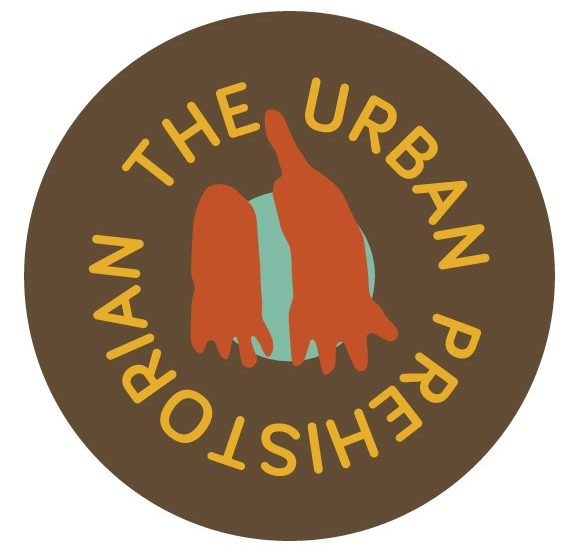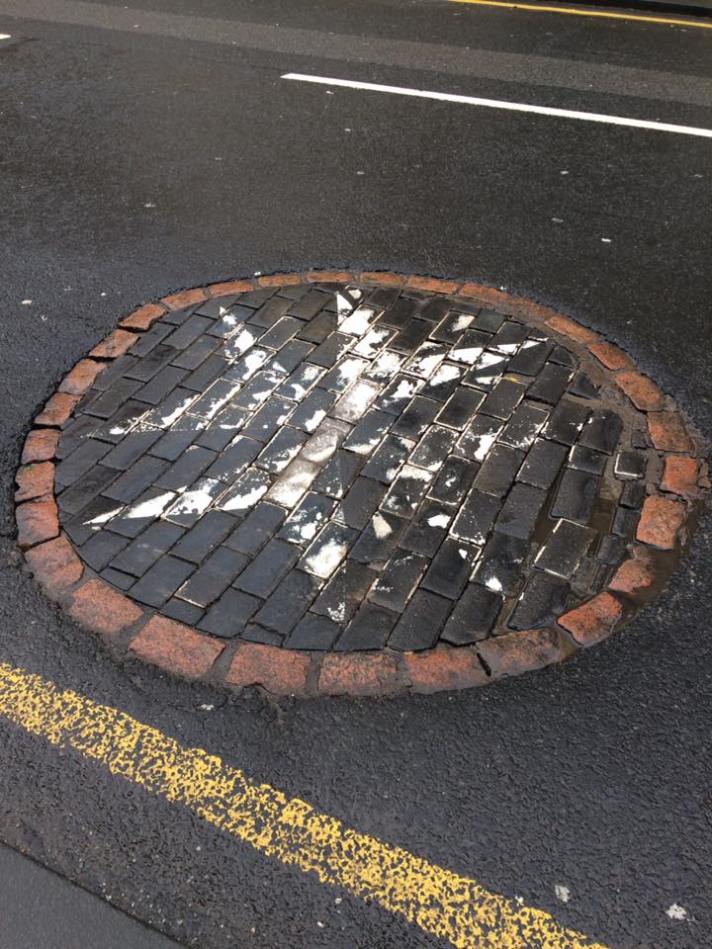This blog post has been written to coincide with a paper I gave at the first ever Scottish Students Archaeology Society Conference held in the University of Glasgow on the weekend of 27th and 28th January 2018. My paper was entitled Houses upon houses: the impact of urbanisation on our understanding of Neolithic settlement in Scotland and at some point in the future will be available to view on youtube. I’ll update this post with a link when that happens.
 The rather lovely conference logo
The rather lovely conference logo
As part of preparing my lecture I revisited an urban prehistory site that I blogged about in May 2016, a Neolithic settlement site that was found in advance of a housing development in Cowie, near Stirling. The blog post, Houses upon houses, was a reflection on how archaeology could as a discipline do better to utilize the results of developer-funded excavations, in terms of how we synthesize such data, but also how results are disseminated and what community benefits might accrue from exciting (and even mundane) discoveries. In the case of this housing estate, some of the roads had been given prehistoric sounding names to reflect the remarkable Late Neolithic site that GUARD excavated in 1995. This was an easy win in a sense although does not necessarily tell those who move(d) into this area exactly what was found because their houses had to be built there.


A more imaginative and substantive development happened at Cowie that also drew directly on the prehistoric archaeology but in a potentially more powerful way than the street names – the creation of a children’s playground that was inspired by aspects of what GUARD found, although when I first visited this place I didn’t actually go to the playground because I didn’t find out about it until after the event.
In my first post about Cowie, I assigned the design of this playpark to Judi Legg and Mike Hyatt, and quoted on the design process:
Local children paid a visit to a pre-history park, Archaeolink, and many of the ideas they got from this visit as well as information about the pre-historic Cowie site itself have been built into the design of the park, which includes shelters, cooking and seating areas, and a raised beach, as well as mounds, tunnels, slides and a climbing wall. The children’s involvement in the design development has meant that the design concept which underpins the site layout contains elements which the children understand and which feel familiar to them.
The co-production and imagination that went into this was impressive to say the least. The images I found online of the playpark, such as those below, showed aspects of the excavation results did indeed directly effect the design. For instance, a circular arrangement of mounds with structures inside mirrors the Late Neolithic double-skinned roundhouses found by Atkinson and team. That the material form of this – mounds and not organic structures – was not entirely accurate did not dilute the effect I don’t think.

 The house that inspired the circular playground feature
The house that inspired the circular playground feature
The playpark itself was established a few years after the houses were built after a tragic accident there involving a child. The local community formed a group which campaigned for a safe playpark and the site – which overlies where some of the archaeology was found – was designed with the help of the children themselves, a nice example of co-production. The park cost £110,000 to build and was funded by Section 75 housing developers’ contributions, BBC Children in Need, the Stirling Landfill Tax Trust and Cowie Play Areas Group local fundraising events. Maintenance is provided by the local authority.

I wanted to close a loop, so the day before I gave my lecture I paid a quick visit to the playground which was both frosty and empty as I walked around in the beautiful and dazzling sunlight. Although I found that the form of the playground was creative and exciting, I was also disappointed to see that the site had suffered a decline over the past decade or so and some of the nice features built into the playpark were simply gone or were unrecognizable due to missing elements.

The park itself is called Lost World, which I love, and this name was cast into the sturdy metal and wooden gate into the park, which can be reached by following a narrow pathway between two houses on Flint Crescent.

Once inside the park, it is clear that this is a place that aspires for an organic look using timber and earthwork features that are unusually arranged to draw on excavation results. Boulders were also strewn around. It had a very naturalistic feel even although it channels an anthropomorphic place. The centre of the park is dominated by a curving long mound with tunnels running through it and slides adorning its sides, while there are normal and weird trees dotted around. A looping path meanders around the park and there is always something to look at. Boring it is not.

A nice little Neolithic-style house was evident and in one piece, and although it looked more like a Wessex Late Neolithic house than an Eastern Lowland Scotland one, I suspect excitable children could not care less about that! Or maybe it is a little raised granary? It looks like the playground has interpretive challenges for visitors of all ages.

As I walked around, it was clear that elements of the park were missing or had declined somewhat since the glory days of their first erection. In particular, the long mound, which I had to haul myself atop using a rope, had a huge gouge taken out of the middle to the extent that is had its own sandy stratigraphy.


Upon looking back at old photos, this gap was created by the removal of a large wooden structure that used to be here.

The circular earthwork setting, based on the Neolithic roundhouse plan, also appeared to have several somethings missing in the middle.

Upon closer inspection, remnants of the structures that had once stood here (inspired by ideas of sitting around the fireplace in the middle of a house I would imagine) could still be seen on the ground, the archaeology of an archaeological playground.


The arrangement of boulders, a hearth of sorts, is barely recognizable anymore and this is where the problem with such well-meaning endeavours sometimes arises. There is the awkward question of sustainability. I have seen this so many times before. Noticeboards get dirty and difficult to read or simply become out-of-date. Signs are removed, fall down or become obsolete. Metal constructions rust. Wood falls apart or burns. Earthworks slump or have cars driven over them. No-one has the money to fix the problems. It is unclear who should do this work. The original players in making things happen have moved on.
In other words, attempts to celebrate, preserve and educate the public about archaeological sites often themselves fall victim to the processes of entropy that the archaeological materials underwent in the past that caused the situation in the first place.
None of this is necessarily the fault of an individual or organisation but something has gone wrong and sometimes it is not clear how the problem can be fixed.

As far as I can see Cowie’s Neolithic village, their own Lost World, is in danger of becoming lost again. This is not through anything other than a basic lack of sustainability and funding which are absolutely commonplace problems not just in the heritage sector but also in the age of austerity in which we live.

Yet this is still a wonderful park and there are more ideas and imagination stuffed into this small corner on the edge of a housing estate than is normal. Perhaps the local authority can be persuaded to tidy this up properly, or maybe the community can once again lift themselves to work in a common cause inspired by social need and prehistory. Suggestions made to me both on twitter and at the conference itself suggest to me that there could be a really nice project here, both in documenting this unique playground but also rebuilding, refreshing and – something that was missing I think first time around – really explaining to park users what this is all about. I will see what I can do to help make some of this happen.
It really is a place where it is possible to feel you can reach out and touch the past. Or at least climb up, slide down and crawl through the past.

Sources and acknowledgements: I would like to thank the organisation team for the conference for asking me to speak and allowing me to take an urban prehistory angle!
The excavation report for this site is available open access online. It is John Atkinson 2002 Excavation of a Neolithic occupation site at Chapelfield, Cowie, Stirling, Proceedings of the Society of Antiquaries of Scotland 132, 139-192. The original photos of the playground with the wooden structure in the mound came from the Wild Scot website, as did the extended quotation and the information about the costs, funding and designers. The other old playpark photos came from Stirling Council Play Services and the Free Play Network. Thanks to those who suggested ideas at the conference and on twitter, I will actively be pursuing these.









